| August 22, 2007 —The main house piers are bored | |
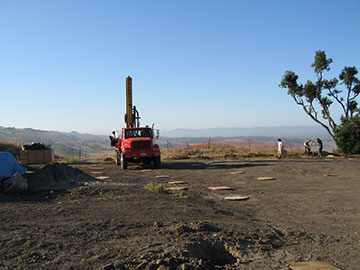 |
When I got to the property, the concrete crew were already set up for boring the piers for the main house. The rig had started on the first couple of holes. The pieces of plywood are set out where each pier will be dug. It’s a little hard to tell from this shot, but it looked like someone had scattered giant playing cards or poker chips around the site when they started. |
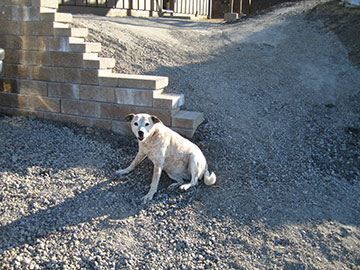 |
Kai was on the job, so Ginger was too and posed for her weekly portrait. |
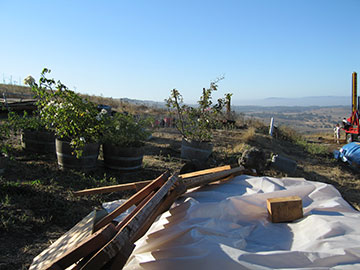 |
My assistant had worked on the weekend to take down the “corral” around the roses. It looks so different without it. I put it up with a former gardening assistant in—I think—2004. We knew nothing about putting in fences, but he was a big, strong guy. We went up to install it just as the dirt was drying out, but it was still possible to dig holes with a post-hole digger. I had a wonderful post level, that hooked around all four sides of a post, with levels on two sides, to get the post perfectly straight. We did such a good job leveling everything, then the dirt dried out and all the posts started leaning every which way! This was my first experience with expansive clay—very graphic. |
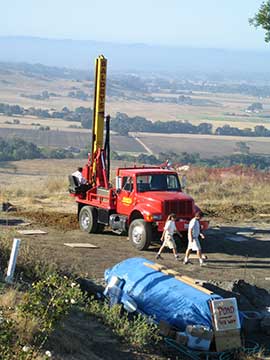 |
Kai and Jasmine, who is in charge of the pour, walk past the rig. I understand that Jasmine is the daughter of the sub-contractor, Robert Kline. She was in charge of the pours on the barn and cottage as well, which as far as I could tell, went like clockwork. These pier and grade beam foundations are immensely complicated, full of cages and rebar mats, and seeing the care with which the previous slabs were poured, I am quite respectful of her skill and knowledge. |
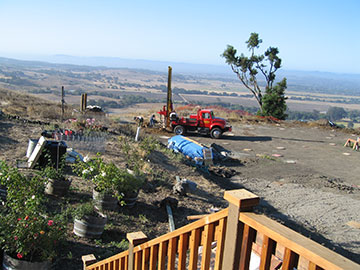 |
Here is another long view of the rig working with the de-fenced rose garden in the foreground. |
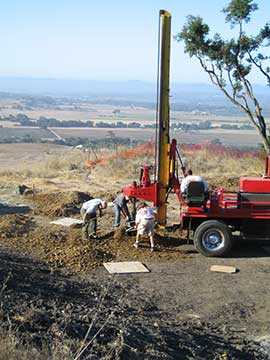 |
The crew needs to shovel the excess dirt away from the pier hole as it is dug. When they are finished with the hole, they cover it with the plywood marked the depth of the hole. |
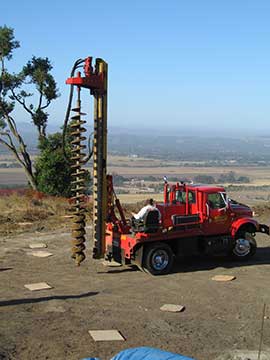 |
The rig operator can drive the truck from his seat on the back to the next drill position. |
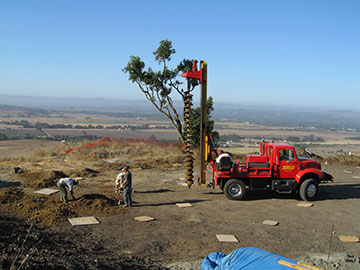 |
He positions the auger right over the plywood, then they take it away and he starts to drill. |
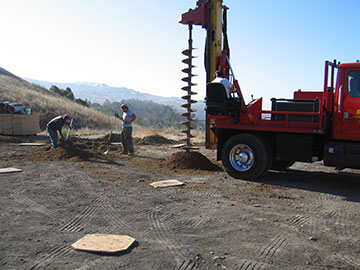 |
You can see the amount of dirt brought up from a relatively shallow bore. Most of these were in the 12' range. |
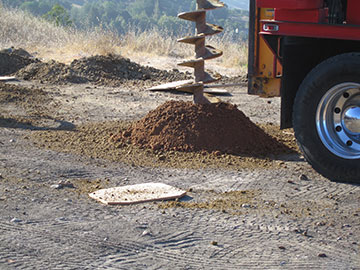 |
Here is a close-up of the rig at work. Notice the beautiful color of the dirt coming out of this bore |
| Click here to see the results of the boring | |
| back to top | |



